Second morning, and we got ourselves up at a civilised hour: eight ayem. The uncivilised part was having to get ourselves ALL the way across Tennessee. It was like NINE hours of I-40 and I-81 (mostly the former), at least getting to bypass Nashville completely since there is a bypass around Nashville now (I-840).
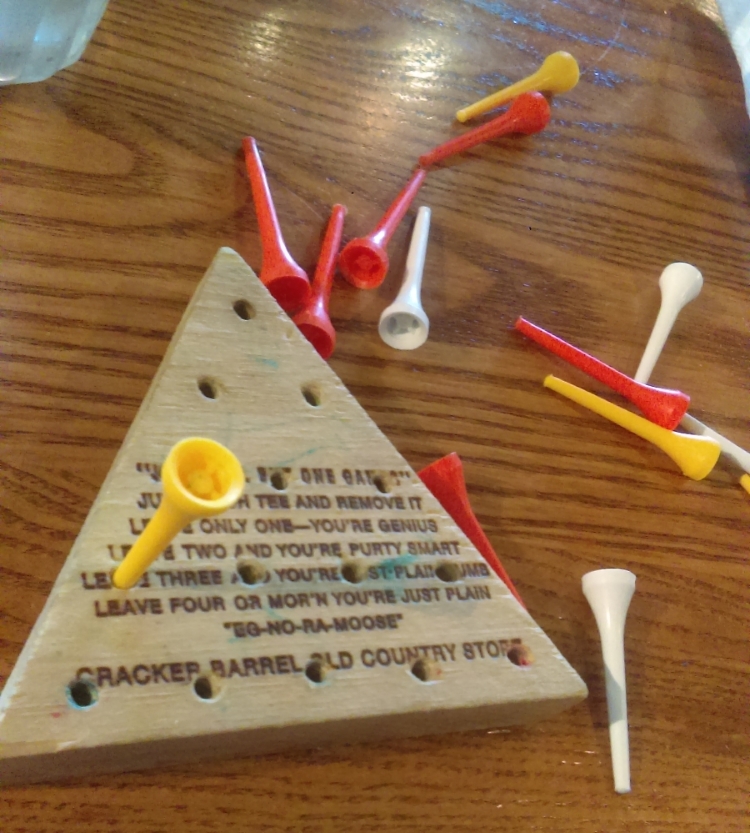
At breakfast (Cracker Barrel in Jackson, Tennessee) Alyks demonstrated himself to be a “genius” by defeating the pegboard game, best two of three.

On a slightly less intellectual note, he pleased himself by discovering a bag of gummi penguins in a rainbow of hues, and spent an hour or so looking for ones that corresponded to various alternate sexuality and alternate gender flags.

Virginia is very much about landscaping their rest areas. We happen to be here at the right time for daylilies to be going nuts, which attracted Alyks’s eye.
We stopped in Wytheville, Virginia, our customary second-night journey break. Lise pushed us on to get there before all the light was gone. On a previous trip she’d discovered a historic cemetery, and wanted to be sure I got to see it, since I have a maggot for old cemeteries and gravestones. And this one was well worth seeing: German Lutheran, dating to the first years of the nineteenth century, and full of astonishing gravestones from a German-Swiss stonecutter named Laurence Krone. His work is found all OVER southwestern Virginia, and some of it is so remarkable that it’s been listed in the National Register of Historic Places. None of the individual stones in this cemetery (St. John) are listed, but the whole group is a big enough deal to get the church and graveyard into the Register.
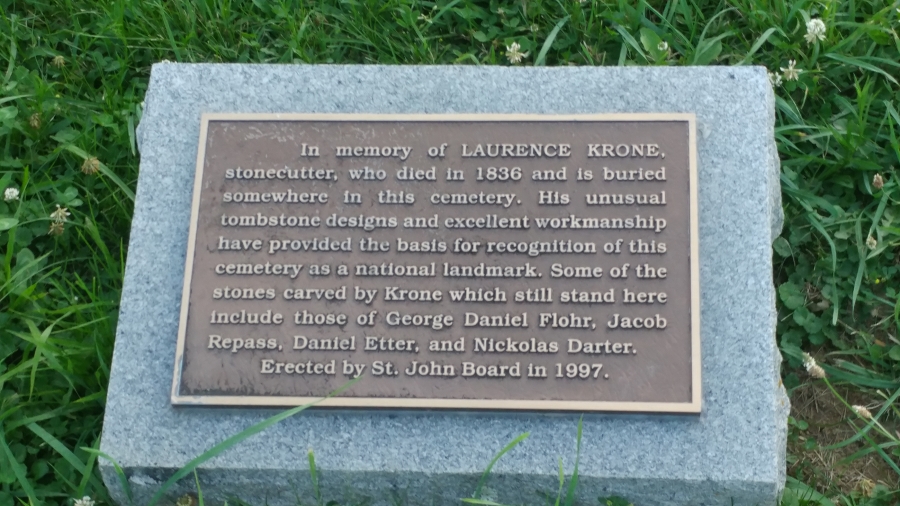
Krone died in 1836 and is buried in an unmarked grave in the cemetery—apparently there was nobody else around to carve a stone for him!
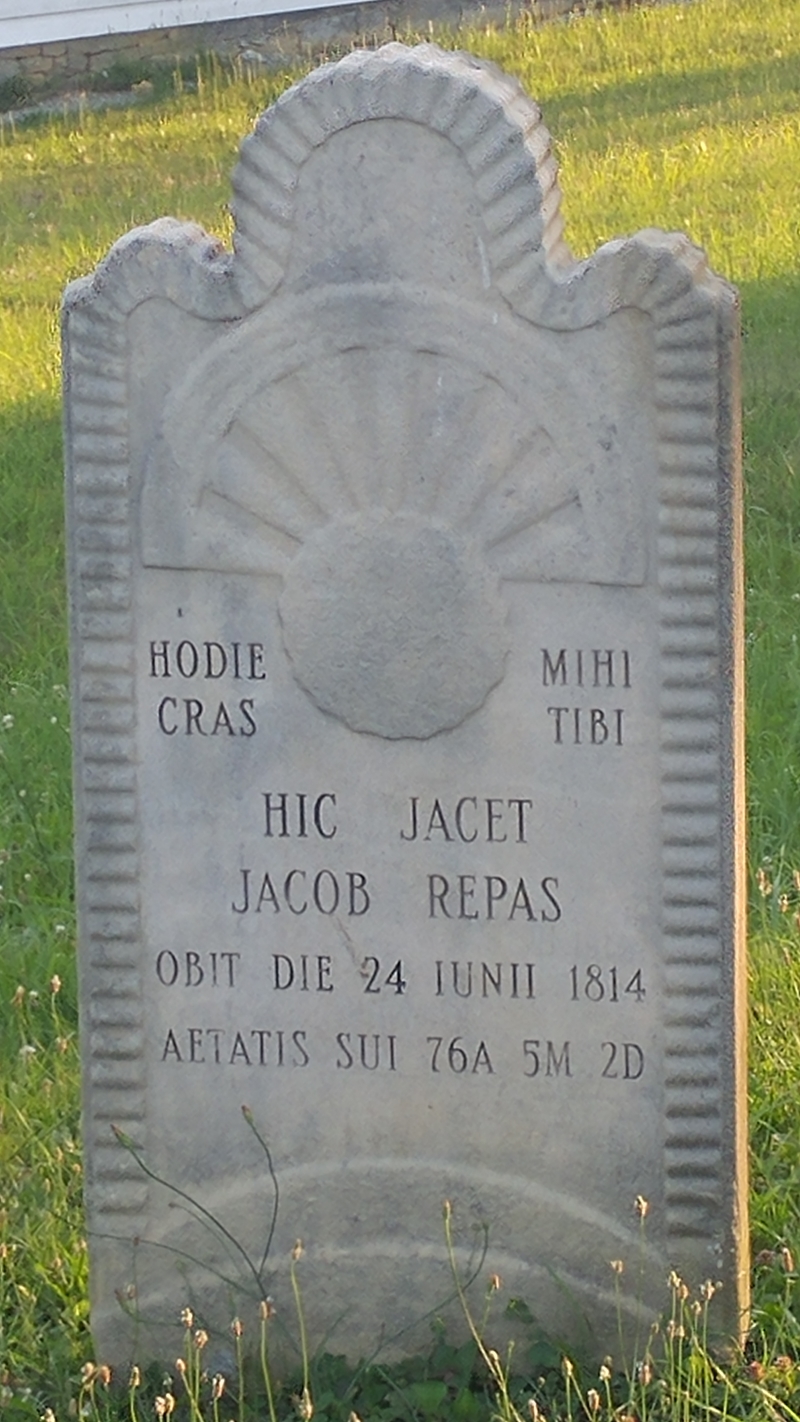
Grave of Jacob Repass, first pastor of St. John church. Krone’s inscription was very shallowly carved and badly worn so someone, in an ill-advised move, re-cut the inscription using late twentieth-century letter forms and tools that SO utterly do not match. The sunrise motif is original.
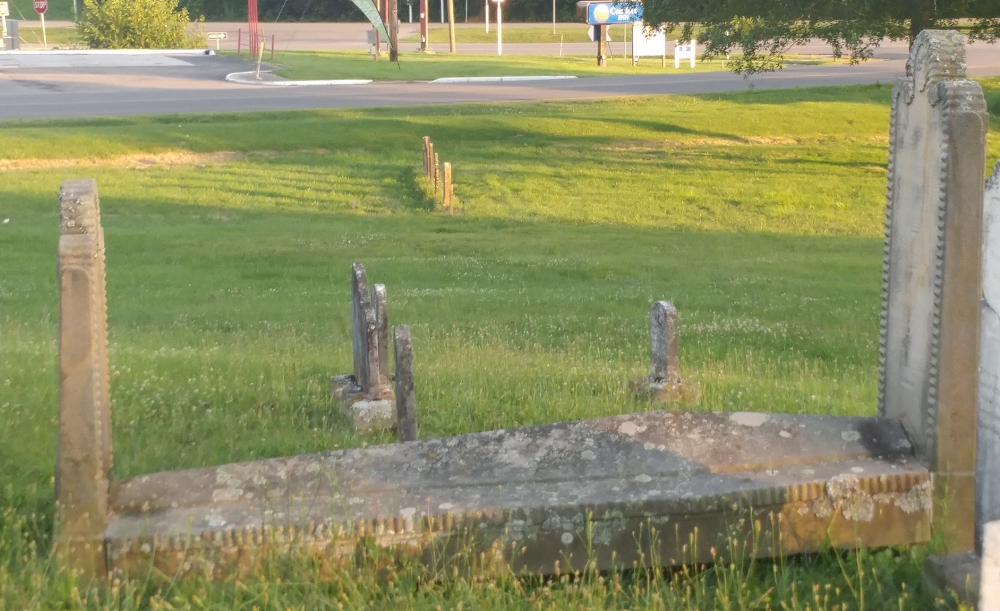
Fortunately, other examples of Krone’s work are still in original condition, including the gable-lidded grave of Daniel Flohr, second pastor of the church.
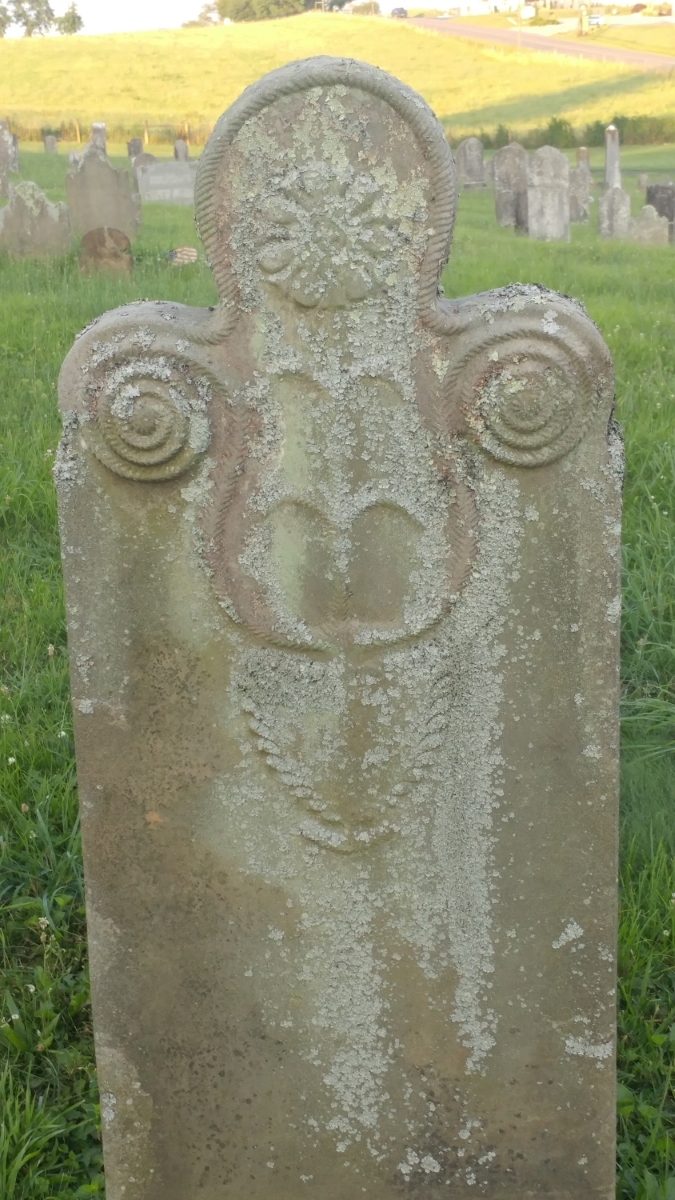
Besides the crinkled-ribbon motif on the face of the stones, Krone often decorated the reverse with floral or astronomical motifs. All of that detailed work took a long time, so it’s remarkable how many he completed and how many of them remain in the present day. ALL of them, though, are covered in lichen and badly need cleaning by someone who knows how to clean period gravestones (there IS an art and a craft to it).
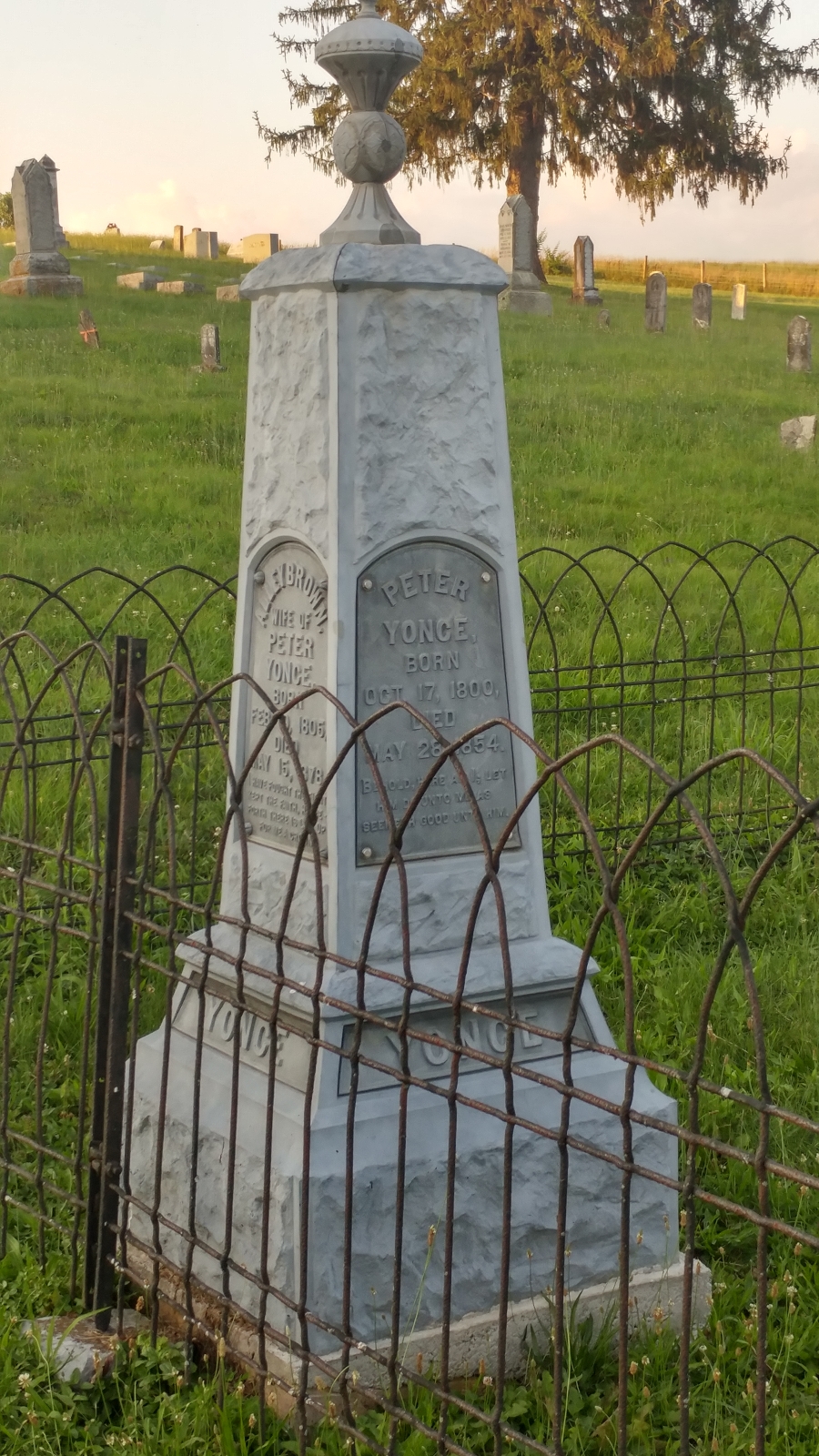
Another fenced lot contained an example of one unusual gravestone material: zinc. It was marketed as “white bronze” and almost all examples were made by the Monumental Bronze Company of Bridgeport, Connecticut for a period of forty years. While zinc monuments are durable and less expensive than bronze, they were denigrated for their “cold” bluish colouring and how it was obvious, when tapped, they were hollow metal and not stone. This example has tablets for three family members bolted to the faces.
